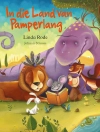In ‘The King of the Golden River, ‘ John Ruskin crafts a richly imaginative fairy tale resonating with moral allegory, set within the picturesque backdrop of the Tyrol Alps. This purported children’s story stands out in Ruskin’s oeuvre, blending elements of fantasy and social commentary while employing a lyrical and ornate narrative style reminiscent of the Pre-Raphaelites. The tale intertwines the theme of greed versus generosity, as it follows the journey of young Gluck who, with his kinder spirit, is pitted against his avaricious brothers in a quest for gold and redemption, ultimately culminating in a poignant critique of materialism. Ruskin, a prominent Victorian art critic, social thinker, and philanthropist, infused his works with deep reflections on nature, society, and ethics. His profound appreciation for natural beauty, combined with a passionate critique of industrialization, undoubtedly shaped the moral foundations of ‘The King of the Golden River.’ By drawing from his experiences in the art world and his commitment to social reform, Ruskin encapsulates essential human values in this enchanting tale. This richly illustrated book serves as a profound yet accessible introduction to Ruskin’s philosophy and aesthetic ideals, making it a must-read for both young audiences and adults seeking escapism through meaningful literature. His masterful synthesis of moral wisdom imbued in a whimsical narrative will leave readers reflecting on their values long after the last page.
Sobre el autor
John Ruskin (1819–1900) was a prominent Victorian-era English art critic, social thinker, and a luminary in the fields of literature, education, and ecology. His work exerted a profound influence on the art and culture of his time. Ruskin was born in London into a wealthy family, which enabled him extensive education and travel opportunities, fostering his passion for art and architecture. He attended the University of Oxford and later became the first Slade Professor of Fine Art at Oxford, where he emphasized the connections between art, society, and nature.
Ruskin penned numerous essays and treatises, poetry, and lectures, with his five-volume work ‘Modern Painters’ (1843–1860) bringing him early fame for its profound analysis of contemporary art through the lens of truth to nature. In his prolific career, he also wrote ‘The Seven Lamps of Architecture’ (1849) and ‘The Stones of Venice’ (1851–1853), both highly influential in the architectural world. Unlike his other writings, ‘The King of the Golden River’ (1851) stands out as a delightful fairy tale that weaves together his love for the natural world and his moralistic style. The story, rich in allegory and with a narrative that blends fantasy with Ruskin’s social and ethical beliefs, remains a classic in children’s literature.
Ruskin’s literary style is marked by its descriptive clarity, moral earnestness, and his ability to relate to both scholarly and lay audiences. His writings consistently advocated for the importance of beauty in art and the natural environment, as well as the moral and social responsibilities of individuals.












